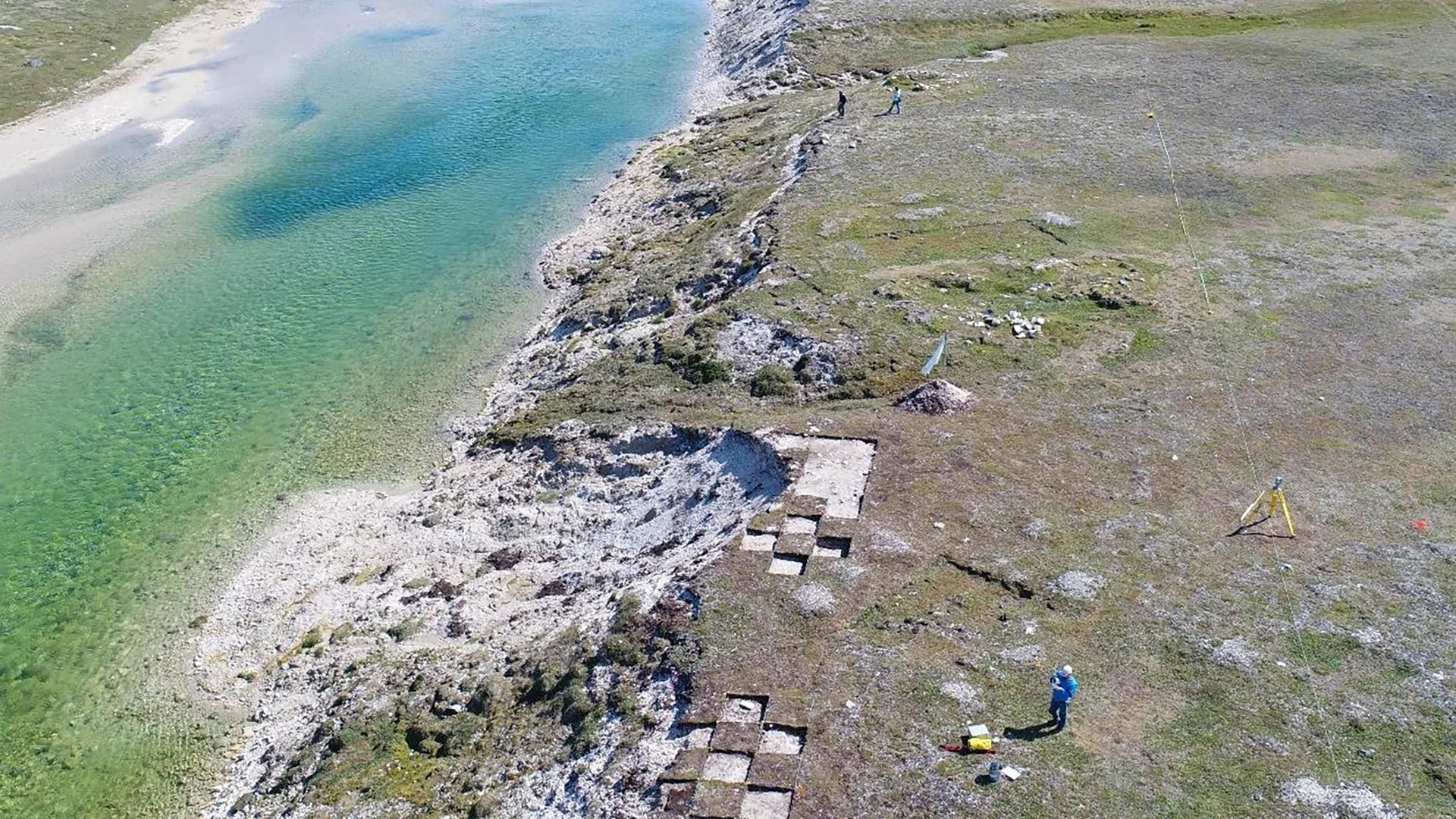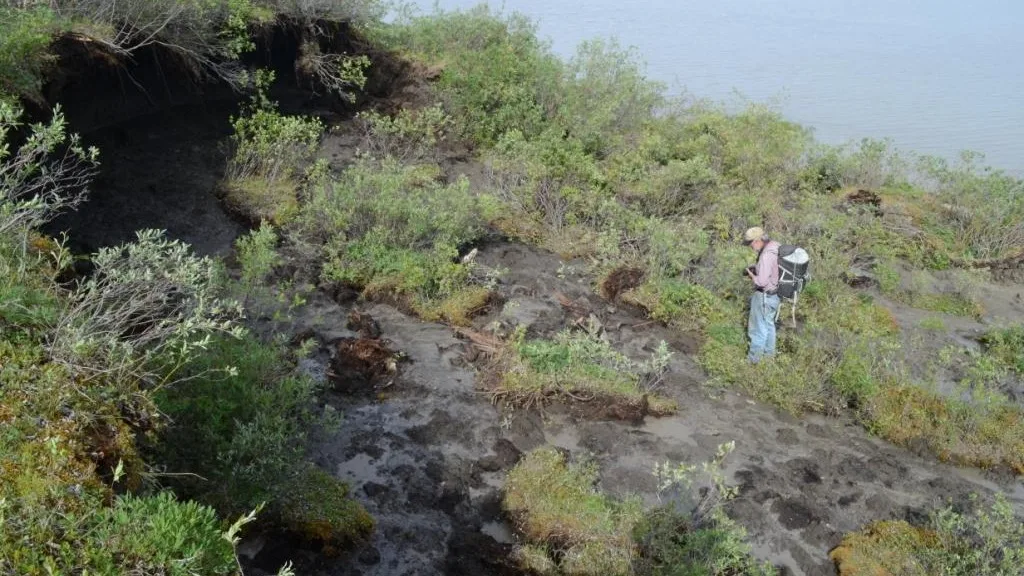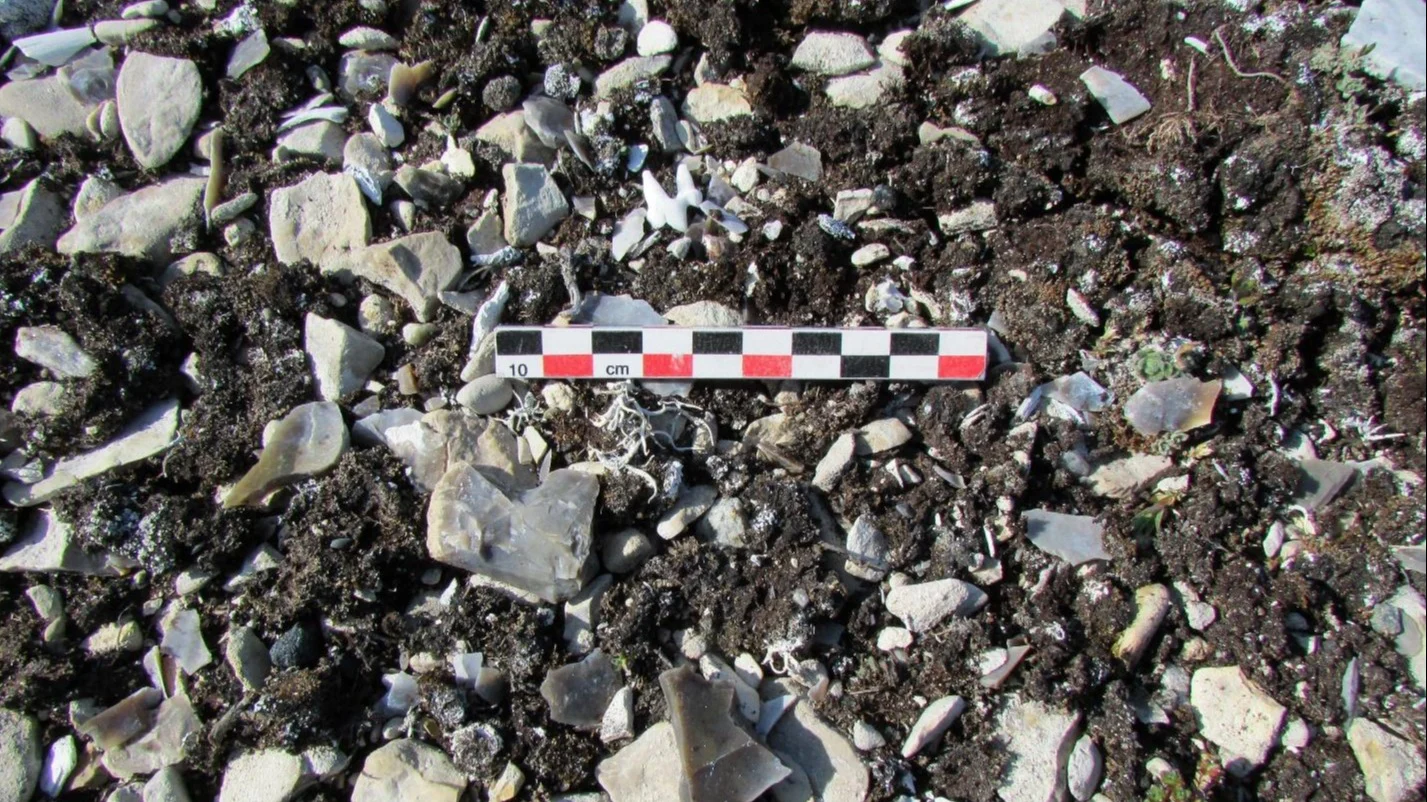
Erosion, permafrost thaw, and sea level rise threaten Inuit heritage sites
In Canada’s north, Indigenous historic places, items, and traditions face erosion, rot, landslides, and damage from encroaching plants. And climate change could claim more of them before they’re ever rediscovered.
Each time he takes the helicopter trip, Michael O’Rourke, a climate change archaeologist with the Government of the Northwest Territories, sees how the land changes. Over the years, he has flown out multiple times to survey archaeological sites in the Inuvialuit Settlement Region, part of Canada’s western Arctic.
As the region warms at an accelerated pace — nearly four times faster than the global average by some counts — climate change is poised to impact traditions and livelihoods in the Arctic. Changes in sea ice and snow in a warming climate can wreak havoc on traditional hunting and fishing grounds, on top of damaging currently inhabited communities.
But climate change poses a threat to historically and culturally important structures and places in the Canadian Arctic, too. These impacts, which include erosion, permafrost thaw, and sea level rise, vary by region, but they damage or even destroy parts of the north’s history.
“I mean, there's definitely an urgency to it all. This is all happening now. It's happening fast. It has been happening for quite a while,” O’Rourke told The Weather Network.

The effects of permafrost thaw seen at the McKinley Archaeological site in the Northwest Territories. (Michael O'Rourke/Arctic Cultural Heritage at Risk Project)
‘It can be a little hard going to work in the morning’
In the 1800s, Nuvuraq, now also called Atkinson Point, was an active Inuit village, and home to around 20 sod houses. O’Rourke first went to the site in 2013 when he was starting his PhD. All of the structures have collapsed.
“I mean, honestly, it was just a 200-metre wide beach with some sand dunes,” he said. “And there's nothing else left [of] a massive village.... So, that’s a pretty big one. That was a major loss.”
There are many ways Canada’s rapidly warming Arctic climate threatens to degrade or ruin heritage sites, though they vary from place to place.
As the permafrost in the Arctic melts, it gives way to landslides, called retrogressive thaw slumps. For example, one study reported that Banks Island in the Northwest Territories saw 4,000 of these slides between 1984 and 2015, often during particularly warm summers. The research posits there was a 60-fold increase in this timeframe.
In his treks, O’Rourke has visited the McKinley Bay archaeological site, located near the eastern end of the Tuktoyaktuk Peninsula. Previously, the 500-year-old former Inuit village had 11 sod houses. But since 2004, the bluff it sits on has been eroding at around one metre per year.
“In the time that I've been visiting, we've already lost two entire houses from that shoreline,” he said.
Many Inuit established sites like this along the coast, or on islands, throughout history. Now, these sites are facing coastal erosion — which claims 40 metres of Canada’s Arctic coastline each year — and sea level rise.
This past summer, O’Rourke visited one such site: Kitigaaryuit, an ancestral village near Mackenzie River's East Channel and Kugmallit Bay. There, erosion is slowly but surely eating away at the land.
As the area warms, and the permafrost thaws, any previously frozen object in the ground is exposed to water and air. This means that delicate items, like those made of leather, can begin to rot, the researcher added. “There's not a lot of good news stories, to be perfectly honest with you. It can be a little hard going to work in the morning.”
Changes in vegetation is yet another threat, according to Lisa Koperqualuk, president of the Inuit Circumpolar Council Canada. While, according to one paper, the tree line hasn’t probed much farther north in the past 50 years, shrubs are a different story. In the western Canadian Arctic, for instance, shrub coverage has increased by between 1.4 and 4.2 per cent each decade between 1984 and 2020. The roots of the shrubs can slow erosion, but they can also grow through and damage structures and objects.
A warming climate also means better growing conditions for fungi. One study took 125 wood samples from the Peary Huts — made by settler explorers in the early 1900s — on northern Ellesmere Island in Nunavut. In these samples, the team of researchers identified multiple fungi species associated with soft rot.
'It's a real threat to our heritage’
It’s more than just heritage or cultural sites that are at risk. According to Aasivak Arnaquq-Baril, heritage manager at the Inuit Heritage Trust, there are many artifacts or “cultural belongings” as well. These vary from place to place, but can include harpoons, hunting tools, tools for processing skin and meat, needles, and others.
“It’s a real threat to our heritage,” he told The Weather Network.

Artifacts, like flakes and bone fragments, exposed on the soil surface due to erosion at Pujjunaq (Mansel Island) in Hudson Bay, Nunavut, in 2017. (Avataq Cultural Institute)
Arnaquq-Baril added some people and communities might be against excavating these objects for various reasons, including them ending up in museum collections elsewhere in Canada. Currently, Nunavut is the only territory that lacks a space to preserve these parts of its history, though there are plans to build a place to do so, called the Nunavut Cultural Centre. This could address some, but not all, of these concerns, he said.
For his part, O’Rourke said that he is working to connect with communities in the Northwest Territories to find culturally appropriate ways to manage pieces of Arctic heritage, if, indeed, that’s what the community members want.
Climate change could increase the odds of heritage sites and cultural artifacts disappearing or being destroyed before they get documented. Koperqualuk said this may have already occurred in the past so there’s an urgent need to gather as much information about the sites as possible.
“[There are] still very many sites that are not known, and that could actually disappear without getting rediscovered,” she said.
Thumbnail Image: An aerial view of JlGu-3, a Tuniit (Dorset) and Inuit archaeological site threatened by erosion, taken on Pujjunaq (Mansel Island) in Hudson Bay, Nunavut, in 2017. (Avataq Cultural Institute)

